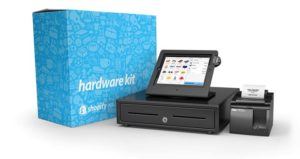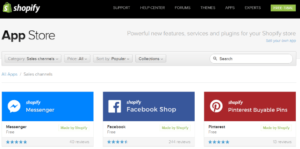Role for merchant banks in the future of payments?

Many facets of traditional banks are under direct threat from digital innovations. Merchant acquiring, specifically, provides an interesting example. Merchant acquirers facilitate card-based payments for merchants (i.e. retailers, restaurants, any business accepting cards). Wells Fargo is the 6th largest merchant acquirer in the US and processes >$280B in payments a year. While not the largest, Wells provides an interesting look into how ‘digital’ is not only impacting the acquiring business, but also the face of payments and commerce more broadly.
Digital trends are threatening the ways merchant acquirers service and retain existing clients as well as their ability to attract new merchants. As such, given the stickiness of payments services, Wells’s ability to cross sell its vast suite of financial products (i.e. treasury services) is also at risk. Trends include:
- eCommerce growth: retail eCommerce growth is forecasted to reach ~14% of total retail sales globally by 2020 driven by forecasted CAGRs of ~21.3%, vs. ~5.9% for total retail. In the US, digital spend is expected to comprise over 50% of retail spend in the near future.
- Mobile commerce (mCommerce) growth: there is a strong argument to say that eCommerce is ‘old hat’. Compared to ~9.5% forecasted eCommerce growth in the US, mCommerce in the US is expected to see ~23% CAGRs and share of almost 50% of all digital spend by 2020.
- Future growth arenas: the explosion of e and mCommerce begs us to ask ‘what’s next?’ for commerce. What’s next could include true omnichannel shopping (i.e. a true blend of in-store and digital shipping), social/platform driven commerce (i.e. Facebook, WeChat as channels), and VR-hosted shopping experiences (i.e. a virtual dressing room).
Given these trends, merchants are grappling to keep up with consumer demands. Merchant service providers must adapt and facilitate.
In addition to challenges in keeping existing clients happy, the ways merchants find, assess, and contract for pay

ments services are changing.
- Traditionally, merchants would first look for in-store solutions, such as a cash register and physical card reader. However, low barriers and cost to establish an online presence has shifted that first step. Popular enablers also facilitate payments services. For example, website builder Shopify has partnered with payment provider Stripe to offer Shopify Payments, delivering both digital and in store payments solutions. Shopify Payments now generates ~50% of Shopify’s revenues.
- Even if merchants bypass digital-first options, smaller merchants are afforded a wealth of out of the box, self-service tools from players like Square.
- In addition to providing easy-to-implement solutions at competitive prices, these players (and others) have developed application ecosystems that allow merchants access to multitudes of other tools. For example, if a Shopify merchant is interested in reaching new sales channels – that merchant can access integrated software solutions via Shopify.

Shopify App Store Some may contend that the trends above cater to smaller merchants; however, these smaller merchants represent an acquirer’s highest margin accounts as well the enterprise-scale merchants of tomorrow.
So this leads us to ask: ‘what has Wells done?’. Outside of one stroke of luck, Wells hasn’t done a whole lot. Wells’s eCommerce offerings, through a partnership with First Data, are old and clunky. Also, Wells still adheres to the circa 2010 definition of ‘mobile’ payments– e.g. in store payments via mobile phones (Apple Pay, etc.). They also don’t provide a solution for in-app payment acceptance, and have to rely on their promoted Payeezy gateway to facilitate mobile-in-browser acceptance.
What is fascinating about Wells’ lack of action, is their partnership with Stripe, one of the critical drivers of the aforementioned trends. For context, Stripe provides solutions for digital/mobile-forward merchants (i.e. Warby Parker, Lyft, Doordash), platforms (i.e. Shopify, Facebook, Twitter), and even enterprise class merchants (i.e. Best Buy, Adidas, Target) – and their partnership with Wells has been key to Stripe’s success. While Wells acts as the merchant acquiring back end for Stripe, they are completely obfuscated from the merchant experience. Stripe is the one-stop-shop for the merchant, and with their incredible APIs and developer tools, is easily consumed and optimized. Funnily enough, Wells doesn’t promote the relationship or Stripe’s services. Perhaps they’re limited contractually – or even more pessimistically, perhaps Wells doesn’t want to hamper Stripe’s growth with an association to a stodgy old provider.
Going forward, there are a number of things Wells should consider to better position their acquiring business for digitization, including:
- Deepening partnership with and support of Stripe. An acquisition is likely not possible given the need for Stripe to integrate with other financial institutions abroad
- How to facilitate ex-US growth of Stripe and establish corresponding merchant acquiring relationships in key geographies
- Replace First Data’s Payeezy gateway as their digital offering. Address potential for mobile in-app acceptance
- How to engage the platforms and aggregators of that will drive the future of commerce (e.g. Facebook, Uber, Amazon, WeChat)
Words: 793
eMarketer eCommerce Retail Sales Forecasts: https://www.emarketer.com/Article/Worldwide-Retail-Ecommerce-Sales-Will-Reach-1915-Trillion-This-Year/1014369
eMarketer US mCommerce Retail Sales Forecasts: https://www.emarketer.com/Article/Mcommerces-Rapid-Growth-Primarily-Coming-Smartphones/1013909
Shopify Quarterly Reports: https://s2.q4cdn.com/024715446/files/doc_presentations/Shopify-Investor-Deck-11022016.pdf
Stripe Customers: https://stripe.com/customers
Wells Acquiring Stats: https://electronicpayments.com/assets/media-docs/Nilson-Report-1082.pdf
Context: https://www.pwc.com/im/en/publications/assets/banking/global_digital_banking_survey1.pdf
Context: http://www.mckinsey.com/business-functions/digital-mckinsey/our-insights/the-rise-of-the-digital-bank



Great read Patrick! Fintech is definitely amongst the “hottest” spaces of innovation at the moment. Even though the global VC funding for fintech dropped in Q32016, it still continues to be amongst the most coveted segments globally [1]. Millennials are clearly driving this trend with most preferring to go use mobile devices and go “cash less”.
What will be interesting is the dynamic between traditional banks like Wells Fargo and Fintech ventures. It still remains to be seen if they are partners or competitors fighting for a piece of the same pie. At the moment they need each other because of what each brings to the table. The fintech companies bring speed, agility, and understanding of good user experience. However, they lack the scale and trust of traditional banks [2]. Seeing how this relationship evolves will define the future.
Ignoring Wells Fargo’s recent legal woes [3], another challenge is the huge cost of digitization of banks and where it fits in the Bank’s vision. In a recent example, Australia and New Zealand Group (ANZ) bank’s profit took a 24 percent dive due to ‘digital transformation’ i.e. technology costs they incurred to remain competitive in the digital age [4]. Given the profitability pressures facing banks these days, digitization might not be amongst their top priorities.
[1] http://www.businessinsider.com/global-fintech-funding-falls-again-2016-11
[2] http://www.oracle.com/us/industries/financial-services/efma-digital-transformation-wp-2904165.pdf
[3] http://www.wsj.com/articles/wells-fargo-grapples-with-occ-move-1479684090
[4] http://www.zdnet.com/article/anz-banks-profit-takes-a-24-percent-dive-amid-digital-transformation/